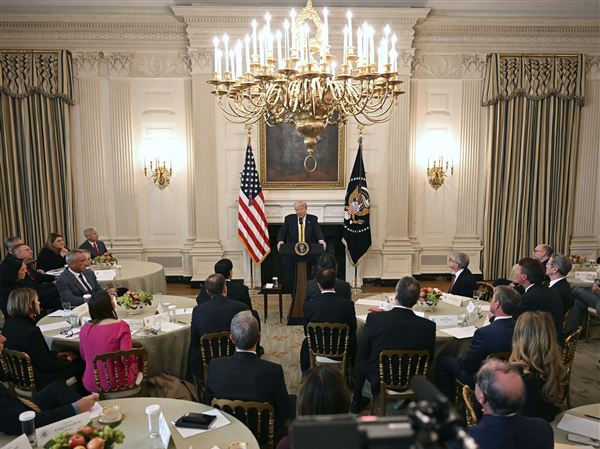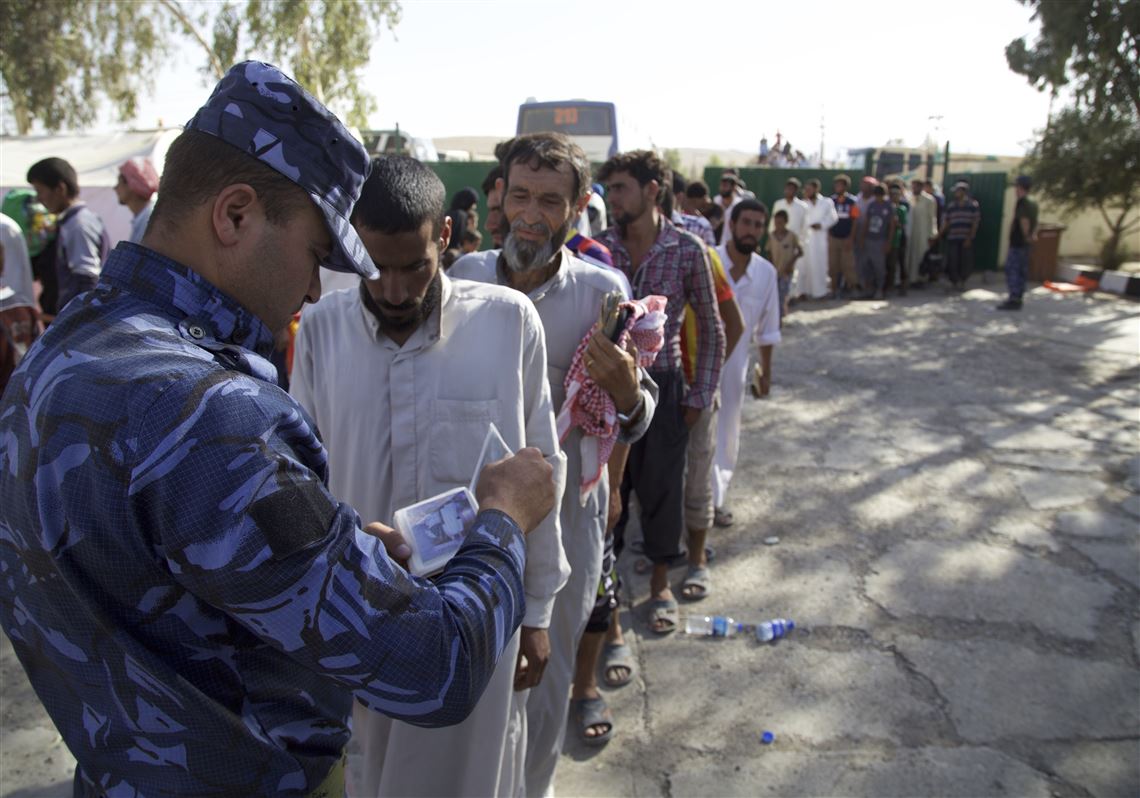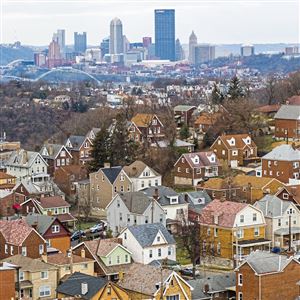TAL AFAR, Iraq — An airstrike left a crater the size of a tennis court in one neighborhood. Artillery punched a gaping hole in the minaret of the city’s main mosque. Some buildings were leveled.
But in the hard calculus of the war against the Islamic State terrorist group, which was evicted from Tal Afar last week after three years of occupation, that was good news.
The majority of Tal Afar’s structures are still standing, even if many have been defaced. Compared with the wholesale destruction in the battle to retake Mosul, where the worst-hit neighborhoods resemble the landscape after a 7.0-magnitude quake, the smaller city to the north is largely intact — even if it may still take months to repair the scarred masonry, cover up craters and sweep aside the detritus left by Islamic State fighters, including their graffiti of death.
The speed of the victory — 11 days compared with nine months for Mosul — is partly responsible for the comparatively limited damage.
Military commanders said that — unlike in Mosul — they had encircled the city but left an opening in the security cordon, intentionally creating an escape corridor for the trapped fighters, who they hoped would flee into the open desert where they could be picked off.
“I thought I would find my house demolished,” said Mohammed Wahab, a soldier from Tal Afar who returned to his hometown for the first time on Friday, three years after having fled the Islamic State’s advance.
The soldier described the utter destruction he had witnessed in Mosul, which was retaken from the Islamic State after grueling house-to-house combat. He had fretted that Tal Afar would face the same fate.
He headed to his neighborhood with trepidation, he said. When he walked inside his home, he found that Islamic State fighters had punched a man-size hole in the living room wall, a tactic to allow them to move from house to house undetected by aerial surveillance.
The television was gone, a window was broken and signs of the group’s occupation were everywhere – fighters had eaten off his plates and slept in his bed.
“I was expecting much worse,” he said. “I’m thrilled to see it in one piece.”
There are a number of reasons the city was spared, while others were not. Tal Afar had less strategic significance to the Islamic State, also known as ISIS, which invested fewer resources to defend it. Relatively few civilians were trapped inside, making it easier for troops to maneuver.
But commanders are also citing the decision they made to leave an exit for the militants, a tactic also used in previous battles including in the cities of Falluja and Ramadi.
It is a tactic that military officers rarely discuss, partly because it invites criticism that they were soft on the Islamic State by letting its fighters escape.
Using the ashtray in his office to represent the city of Tal Afar, Gen. Najim al-Jobori traced his fingers around the edge of the circular shape counterclockwise, stopping just before he completed the circle. The gap represented the spot purposely left open in Tal Afar’s northern neighborhood.
“The security cordon in the north of the city was never fully closed so that the ISIS fighters could flee, with the plan of killing them later in the desert,” said the general, commander of operations in Nineveh Province, which includes Mosul and Tal Afar. “This was so that the city could be saved.”
The opening in the security cordon was confirmed by Gen. Haider Alubaidi, a deputy commander in Iraq’s elite Counterterrorism Service. “How we avoided destroying the city is that we opened a loophole for the terrorists to escape,” he said.
But if the plan was to kill them in the desert, that did not fully pan out.
Hundreds of Islamic State fighters surrendered to Kurdish pesh merga forces about 16 miles north of the city. The mass surrender invited criticism, including from Iraq’s former prime minister, Nuri Kamal al-Maliki, whose relations with Iraq’s Kurds were always troubled.
“The most important question, who allowed for hundreds of ISIS terrorists to withdraw from Tal Afar and deliver their weapons to the pesh merga forces?” asked Mr. Maliki. “Everyone knows that Tal Afar was not liberated by fighting, but by an agreement.”
Michael Knights, an analyst at the Washington Institute for Near East Studies, said that the escape corridor concept had been used in the battles for Ramadi and Falluja, Iraq’s first two major confrontations against the Islamic State. “It’s a very Iraqi tactic — this is not something that the U.S. military would think up on its own,” said Mr. Knights, who has been studying Iraq for more than a decade.
Giving militants an exit has been part of the Iraq military’s approach since 2015. “The Iraqis have consistently said ‘Let’s give them a way out, because we don’t want Ramadi or Falluja to get wrecked,’” Mr. Knights said.
Until Mosul, the evacuation corridor concept yielded mixed results. In Ramadi, Mr. Knights said, the militants simply used the opening to add reinforcements, lengthening the conflict. The city was finally retaken in early 2016, but left in ruins.
By contrast, in the fight for Falluja, convoys of Islamic State fighters used the opening to escape and their convoy was later bombed, said Mr. Knights, describing that example as a success.
When the operation began last October to retake Mosul — by far the largest city controlled by the Islamic State — Iraq’s military and its coalition partners began with a push in eastern Mosul.
Three months later, the eastern half was declared liberated with limited damage, as the Islamic State fighters fled across the Tigris River to the city’s western and more congested half.
That is when the battle got particularly ugly, as the militants became trapped in warrens of the Old City. Airstrike after airstrike pounded the area, obliterating buildings into powder. A senior American general described the combat as the worst he had seen in 35 years.
Based on the ferocity of the final months of the Mosul battle, coalition commanders expected fierce resistance in Tal Afar.
The objects that Islamic State fighters left behind indicate many had every intention of fighting.
In the Noor neighborhood, a bulldozer that the fighters had planned to use like a car bomb was still parked where the militants had left it. The bulldozer’s chassis was obscured by green metal panels and grates the fighters had welded on, to protect the vehicle so that its suicide driver could reach the target.
Like a skirt, the paneling reached down over the wheels of the bulldozer, ensuring that they would not be shot out.
A soldier climbed on its hood and peered over the paneling, shouting back that he saw a wire that appeared to be part of the detonation system.
A few streets over in the Mualameen neighborhood, two car-bomb factories sat on opposite sides of the street. In one factory, a room was littered with car seats removed to make space for explosives. In another room, car doors were leaning against a wall, removed so that they could be replaced with bulletproof plating.
Nearby, the graffiti on the wall read: “Oh Allah, avenge America and those allied with them. The Islamic State will remain under the noses of the spiteful.”

















